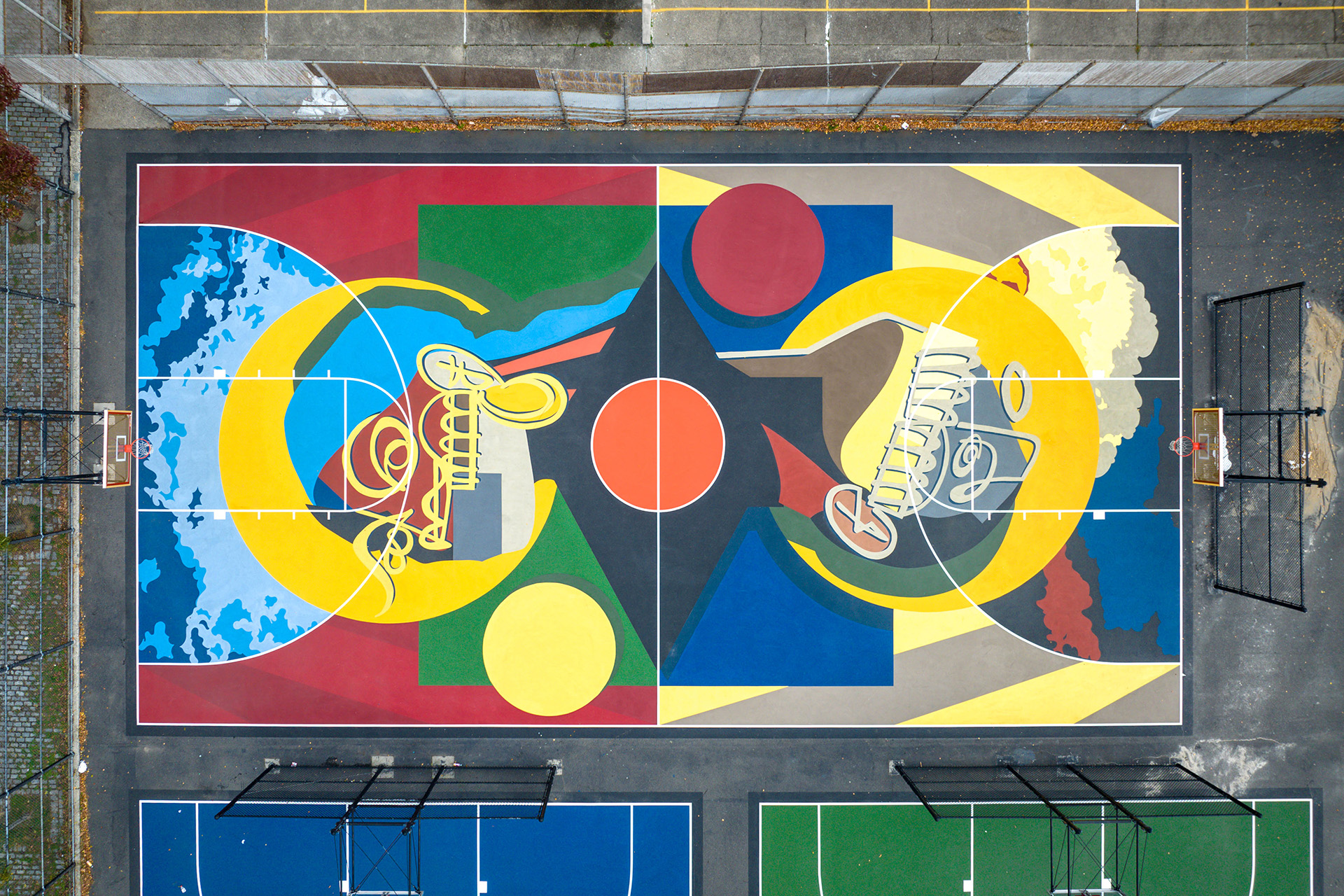
It all started with a simple yet striking realization. Parks across Memphis had backboards plastered with soda ads but lacked basic game lines. For Project Backboard co-founder Dan Peterson, that disconnect sparked a vision that has since evolved into a decade-long mission of restoring basketball courts as vibrant, artful community spaces.
In 2015, I was walking through parks in Memphis and noticing the lack of court lines, Peterson recalls. Meanwhile, I was also seeing photos of the Pigalle court in Paris with those caricatures of celebrities. That contrast made me think about how much a space can influence whether people want to play in it.
Today, Project Backboard is synonymous with the convergence of art, community and basketball. Over the past 10 years, theyve collaborated with some of the dopest contemporary artists to transform courts into dynamic public canvases, from Carlos Roln to Faith Ringgold to Adia Millett to Edgar Heap of Birds. And while each project tells a unique story, Peterson struggles to isolate a moment on the journey that surpasses them all.
There are so many, he says, laughing. Our court with Carlos Roln being featured on a SLAMUPS poster, the Faith Ringgold court making it into People magazine, my kids playing pick-up with Tom Holland on Adia Milletts court in Oakland. Its like each project adds a different brushstroke to the overall picture of what were trying to do.
What began as a grassroots effort to restore game lines has blossomed into a nationwide initiative impacting countless communities. But Project Backboards evolution wasnt solely about scaling up; it was about refining the mission.
Initially, it was about giving kids in every Memphis neighborhood a place to shoot free throws, Peterson says. Now, we prioritize the experience of park users and make sure the space serves both the hoopers and the artist collaborators. If people want to spend time there, and artists want to work with us, everything else will follow.
This ethos is evident in their latest initiatives, like the Real-Time Basketball Club, which invites adults and kids to play together as teammates rather than just as coaches or parents. Another initiative, Common Practice, provides a platform for exploring the intersection of basketball and contemporary art beyond public parks.
Common Practice is a space where we can ask, What happens when basketball becomes the medium for contemporary art? Its a way to keep pushing the conversation forward, Peterson says.
In a symbolic nod to its beginnings, Project Backboard will be returning to Chickasaw Heritage Park in Memphis in late August, the court that birthed it all. The court now will feature artwork by Nina Chanel Abney, an artist whose early partnership with the organization set the stage for a decade of impactful collaborations.
Redoing that court fills me with an immense sense of gratitude, Peterson reflects. I first discovered Ninas work through Elliot Perry back in 2014. Reaching out to her was a long shot; at the time, the idea of painting public park courts with art didnt really exist. But Nina said yes. That willingness opened the door to working with so many other incredible artists.
Since then, Project Backboard has invested nearly $5 million into public parks across the country, thanks to these elevated artist collaborations. But, not one to hog the rock, Peterson naturally deflects the credit to his team.
The work itself couldnt get done without our project install team, the Department of Art, Work & Basketballthe people actually filling cracks, pouring color coatings, taping edges and pulling squeegees, he says. Their dedication and hard work have been the backbone of every project.
As Project Backboard enters its second decade, Peterson encourages everyone who loves basketball to bring that love into the parks, not only as players but as stewards.
If you love the game, dont keep that love to yourself, he says. Spend time in public parkshooping, coaching, hanging nets, picking up trash. Share that love with your community. Thats how we all win.
Header portrait by Austin Bell.

